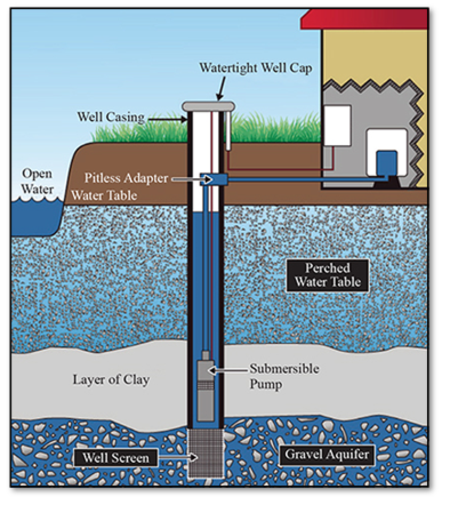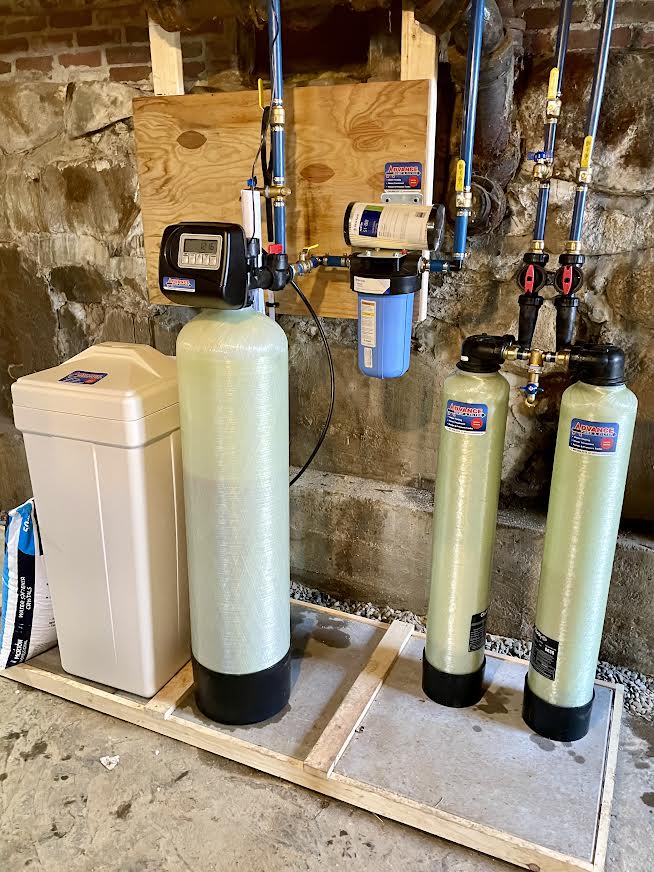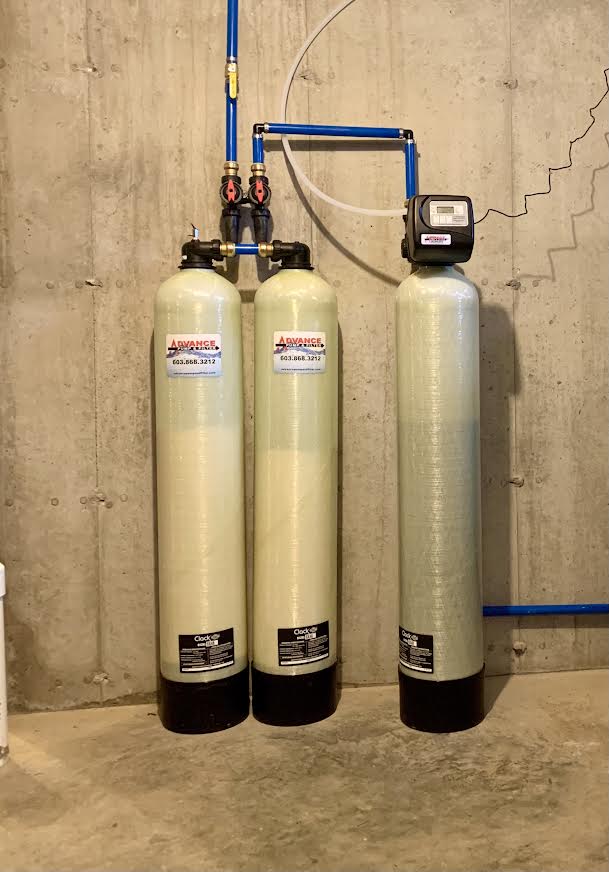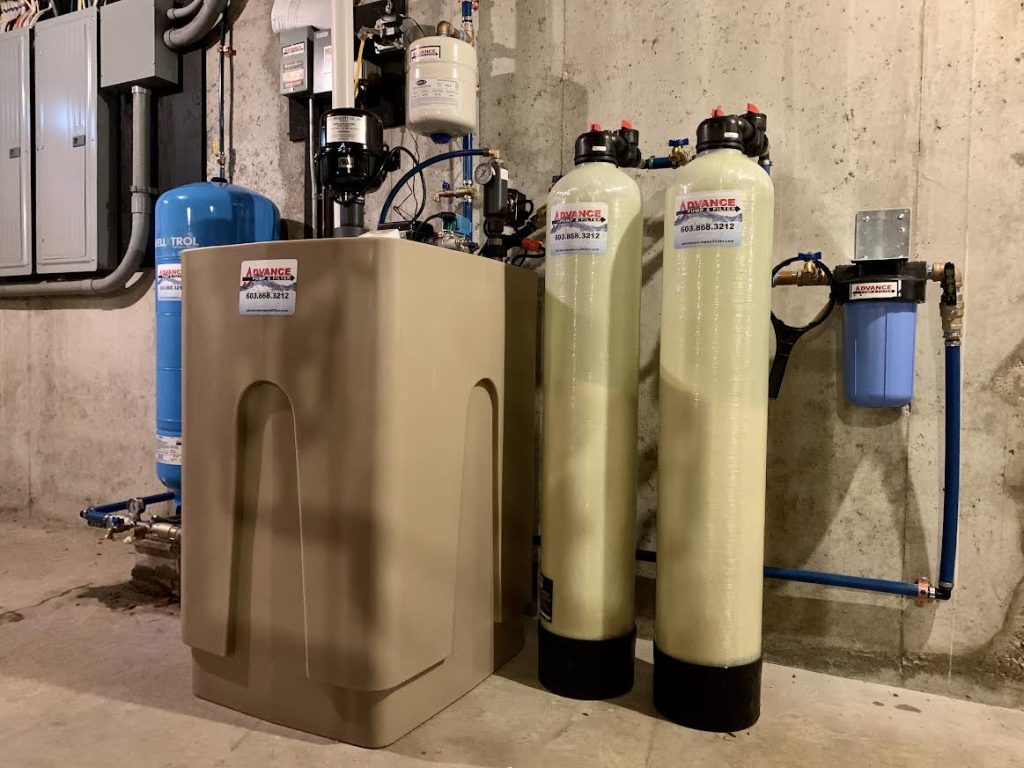Water quality can change over time. For this reason, we recommend testing for arsenic every 3-5 years.
If you have an Arsenic Removal System, annual testing is recommended to confirm that levels haven’t changed and that media quality is still good and is removing arsenic from the water.
If you live in New Hampshire (especially Seacoast NH) or Southern Maine, you may have arsenic in your well water and not even be aware of it. Arsenic is odorless, tasteless and colorless, and can only be detected by water testing. Luckily, modern water treatment technology has given us the tools to deal with this known carcinogen that is present in wells throughout New England.

As you can tell by the map, New Hampshire and Maine are regions of the United States that have prevalent levels of arsenic in their ground water supplies.
This article will go over:
- What is Arsenic and how did it get into your well water
- Health effects of drinking arsenic
- What are the regulations surrounding arsenic and well water
- How to treat for arsenic
What is Arsenic and how did it get into your well?
Arsenic is a natural component of the earth’s crust and is widely distributed throughout the environment. When a well is drilled, it taps into an aquifer. The water in this aquifer has been soaking in bedrock for a substantial amount of time. And during this time, the water can absorb minerals present in the bedrock, like arsenic.

Arsenic in water is most commonly found as either:
As(III), arsenite as H 3 AsO 3 and H 2 AsO 3 – or
As(V), arsenate as H 2 AsO 4 – and HAsO 4 2-
The concentration of arsenic III & V in water can be important to know because it can determine an arsenic treatment systems design. At the end of the day, we want to design a system that will be as effective and efficient as possible.
Health effects of drinking arsenic.
The toxicity of arsenic has been recognized since antiquity. It has famously been referred to as the “poison of kings” or “king of poisons”. The elements infamy grew during the Middle Ages as a nearly untraceable form of murder. Most wells do not reach these toxic levels. Long term exposure to arsenic has been linked to increased risk of lung disease, heart disease, diabetes, cancer and reproductive disorders.
What are the regulations surrounding arsenic and well water?
We have an evolving understanding of arsenic and our policies surrounding it have changed over time. The United States Department of Environmental Protection Agency states that we should always strive for a Maximum Contaminant Level Goal (MCLG) of 0 arsenic in drinking water. With that being said it is understood that this cannot always be realistic so federal Maximum Contaminant Levels (MCL’s) have been set to 0.010 mg/l or 10 ppb.
Due to the prevalence of arsenic in New Hampshire’s drinking water, and thanks to studies done by Dartmouth University, New Hampshire has created legislation that requires arsenic levels to be down to 0.05 mg/l or 5 ppb.
How to treat arsenic in your drinking water:
The first step is a lab test of your water. Each well, water profile, and situation is different and if arsenic is detected in your water, we will recommend options to suit your particular needs.
Recent advances in water treatment technology have allowed us to effectively remove arsenic and there are a number of different treatment methods:
Most of our Arsenic Removal Systems have a Dual Tank design. This is the safest and offers the most confidence that Arsenic will be removed even when the media starts to deteriorate over time. When the first tank of media starts to get spent, you have the backup of the second tank to remove the Arsenic until the first tank gets swapped out. Annual testing tells you when this needs to happen.
Our most popular is the Point-Of-Use (POU) Arsenic Treatment System. This system is both cost effective and efficient because it only treats water on the cold side of the kitchen sink and a fridge ice maker (we can apply this system to other types of fixtures like pot fillers).


Another option is a Whole House Arsenic Treatment System which would treat water that is used for ALL water in the house including toilets, showers, etc. Like the POU System, this whole house option utilizes a lead-lag tank design that adds an element of protective redundancy.



Please give Advance Pump and FIlter a call at 603-868-3212 or email at info@advanceh2o.com if you have any questions about arsenic or would like to schedule a water test and/or free site evaluation.
Water quality can change over time.
For this reason, we recommend testing for arsenic every 3-5 years.
If you have an Arsenic Removal System, annual testing is recommended to confirm that levels haven’t changed and that media quality is still good and is removing arsenic from the water.


